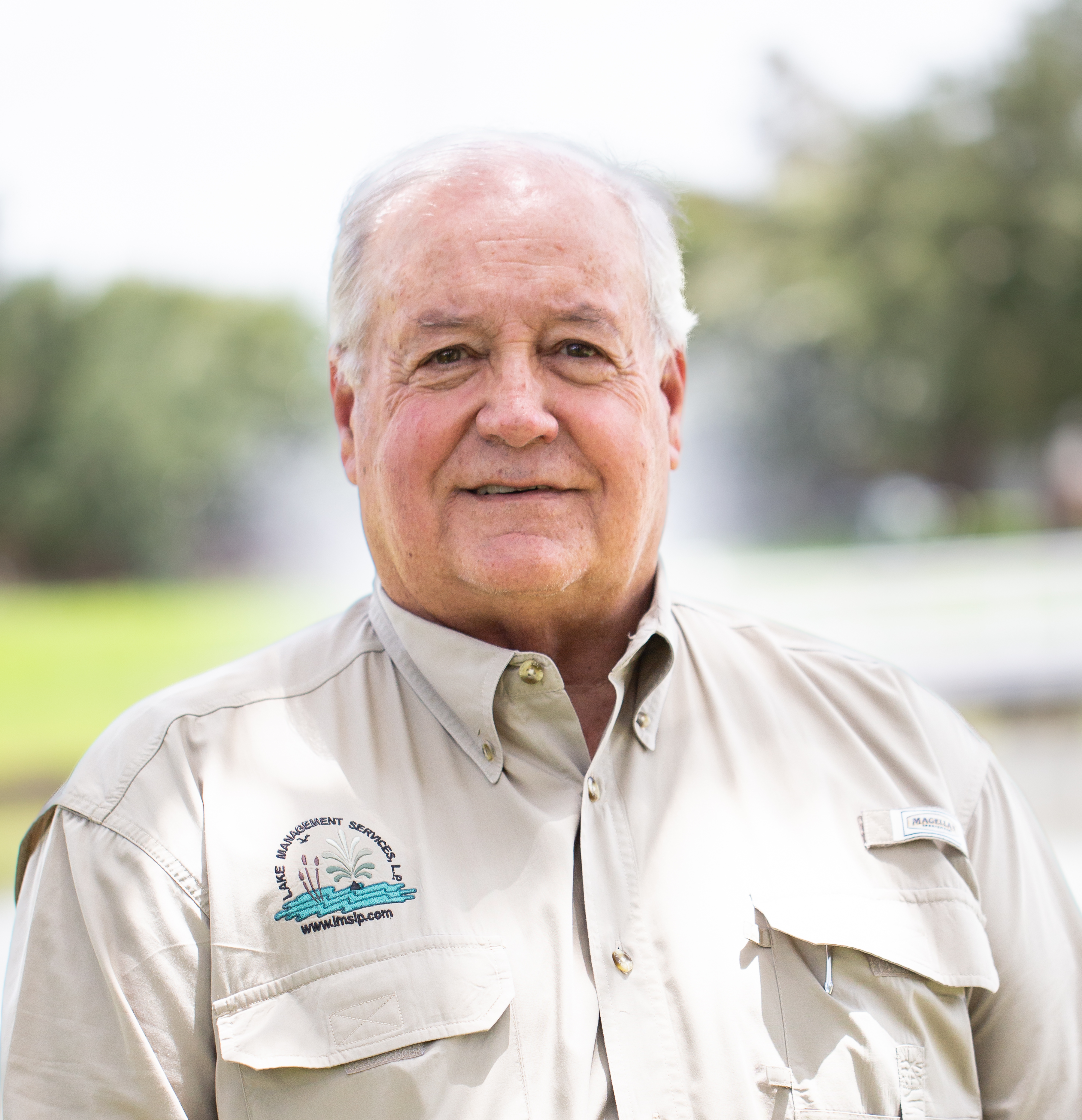Shoreline Plants
Shoreline plants, found primarily along the edge of water, are characterized by their grass-like appearance. These plants thrive in the transitional zone between land and water, playing a crucial role in stabilizing the shoreline and supporting local ecosystems. Their presence is essential for maintaining the health and stability of aquatic environments.
Alligator Weed (Alternanthera Philoxeroides) *
Alligator weed is a perennial plant native to South America known for forming dense stands or mats that can obstruct shoreline access. This invasive species features hollow, aquatic stems that may be single or branched. Its leaves are opposite, long, elliptical or lance-shaped, measuring up to 5 inches long and 3/4 inch wide, with a prominent midrib. Roots often develop at leaf nodes, and the leaves are adorned with soft, whitish hairs at the axis. The plant produces small, white, fragrant flowers in clusters of 6 to 10 florets, borne on long branches up to 3 inches. These flowers resemble those of white clover and are followed by a single seed within the fruit. Alligator weed’s vigorous growth can significantly impact shoreline management and aquatic ecosystems.
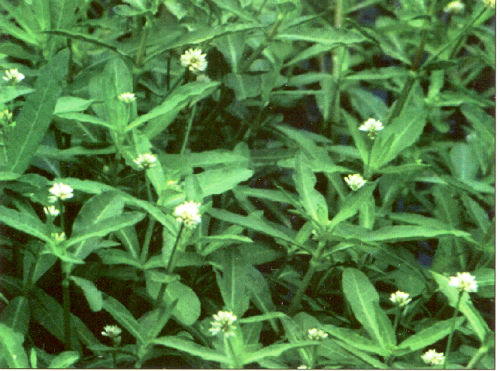
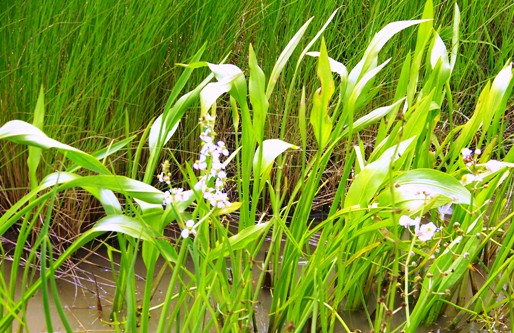
Arrowhead (Sagittaria Spp.)
Arrowhead, belonging to the genus Sagittaria, comprises various perennial species characterized by their distinctive arrowhead-shaped leaves. While most leaves feature a three-pointed arrowhead shape, some varieties present narrow, grass-like foliage. These plants thrive in shallow water or wetland areas, growing from less than a foot to over 4 feet tall. The long, often spongy leaf petioles contain a milky fluid when crushed, and the rhizomes can be extensive, with some species developing large tubers.
Arrowhead plants produce flowers on separate stalks above the water, arranged in whorls of three. The blooms are typically white to light pink with three petals. Their rapid spread occurs through both seeds and extensive rhizomes, making them a prominent feature in aquatic and wetland environments.
Bulrush (Scirpus Spp.)
Bulrushes, which encompass several species, are perennial, grass-like plants that can reach heights of up to 10 feet. They thrive in shallow water or moist soils and are known for their dense growth. Soft-stem bulrush, a common variety, grows in dense colonies from rhizomes. This species features a round, light gray-green stem that tapers to a point and lacks obvious leaves, presenting only sheaths at the base. Flowers typically appear just below the tip of the stem.
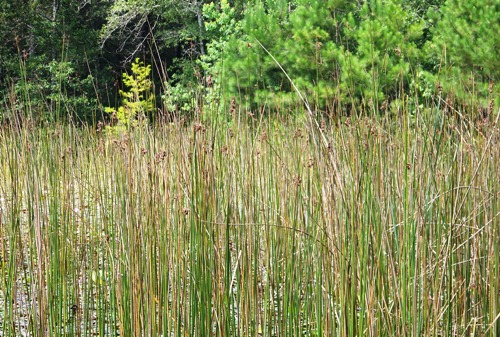
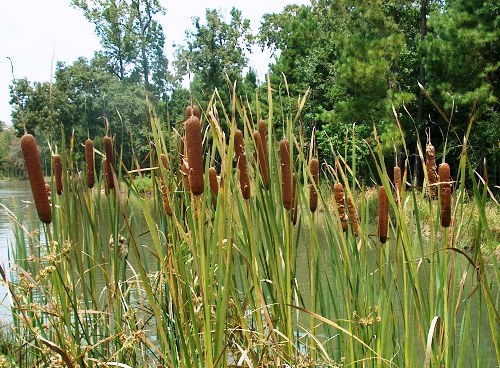
Cattails (Typha Spp.) *
Cattails are distinguished by their flat to slightly rounded leaves that exhibit a subtle twist along their length, reaching heights of 5 to 10 feet. The flowers form dense, dark brown, cigar-shaped structures known as catkins at the end of the spikes. These versatile plants thrive in a range of wetland conditions, from partial submersion to boggy areas without permanently standing water. Cattails are known for their rapid spread, facilitated both by their seeds, which are carried by the wind and float on the water’s surface, and by their underground rhizomes, which allow for vegetative propagation.
Maidencane (Panicum Hemitomon) *
Maidencane is a perennial grass that often forms dense colonies, growing up to 8 feet tall. Its long, narrowly tapered leaves can reach up to 12 inches in length and 1 inch in width, with rough upper surfaces and margins. The flowers are arranged on a long, narrow spike, which can also extend up to 12 inches. Maidencane is known for its extensive rhizome system, enabling rapid spread and establishment in suitable habitats. This characteristic makes it a prevalent, though sometimes difficult to distinguish, member of the perennial grass family.
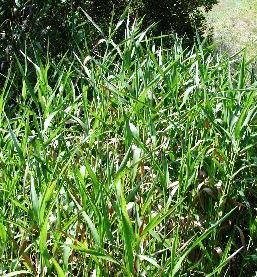
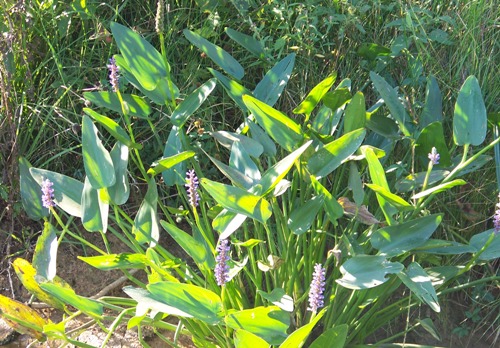
Pickerelweed (Pontederia Cordata) *
Pickerelweed is a perennial aquatic plant that can reach heights of up to 3.5 feet. Its shiny green leaves are heart-to-lance shaped, up to 7 inches long, and attached singly to long petioles that grow in a rosette pattern from the roots. Each stem produces a terminal flower spike, 3 to 4 inches in length, adorned with numerous violet-blue tubular flowers, each lasting only one day. Pickerelweed reproduces through both seeds and rhizomes, allowing it to thrive and propagate in suitable aquatic environments.
Red Ludwigia (Ludwigia Repens)
Red Ludwigia: A classic aquarium plant, grows along the margins of freshwater bodies of water (ditches, rivers, lakes, and ponds). A very polymorphic species in that it readily crosses over with other species of its genus. Similar to Water Primrose.
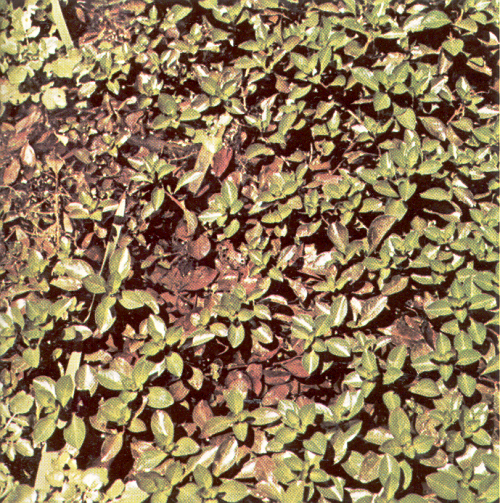

Smartweed or Water Pepper (Plygonum Hydropiperoides)
Smartweed, also known as Water Pepper, is a perennial plant that forms dense colonies in shallow water or moist soils, reaching up to 3 feet in height. Its jointed stems feature swollen leaf nodes encased in a tubular sheath, from which roots can develop. The alternate, lance-shaped leaves are up to 4 inches long and less than 1/2 inch wide. Smartweed produces numerous flower spikes at the ends of its stems, with flowers that transition from greenish to whitish or light pink as they mature. The plant’s fruits are flat, triangular, and dark brown to black, measuring about 1/8 inch.
Water Pennywort (Hydrocotyle Spp.)
Water Pennywort is a small perennial plant that typically grows up to 10 inches in height. Its leaf petioles emerge from creeping stems and attach to the center of the round leaves, which have bluntly rounded toothed margins and can reach up to 2.5 inches in diameter. The flowers, which are white to greenish-white and somewhat inconspicuous, are borne on separate stalks that are as tall or taller than the leaves. These tiny, simple flowers arise from a single point on the stalk. Water Pennywort spreads across moist soil or forms floating mats on the water’s surface, which can break off and create floating islands.
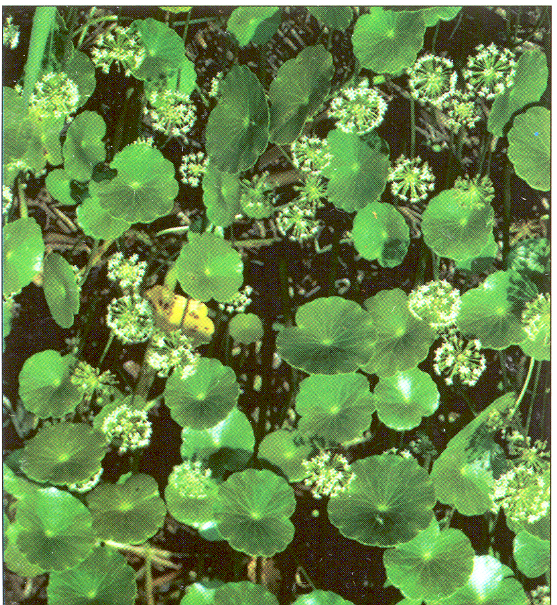

Water Primrose (Ludwigia Spp.) *
Water Primrose is a perennial plant that stands erect along shorelines and also forms long runners, up to 16 feet in length, which creep across wet soil or float on the water’s surface. These runners develop roots at their nodes. The leaves vary in shape and size, ranging from lance-shaped or willow-like (2 to 4 inches long by 0.5 to 1 inch wide) on erect stems to round or oval (1 to 2 inches in diameter) on floating stems, and can be green to reddish depending on the species. The plant features single yellow flowers with 4 or 5 petals, varying in size from 1 to 2 inches in diameter.
*: TEXAS RESIDENTS: THIS PLANT IS NOT NATIVE TO NORTH AMERICA AND IT IS ILLEGAL TO POSSESS OR TRANSPORT THIS SPECIES IN TEXAS. PLEASE REPORT SIGHTINGS OF THIS PLANT TO THE TEXAS PARK AND WILDLIFE DEPARTMENT.






